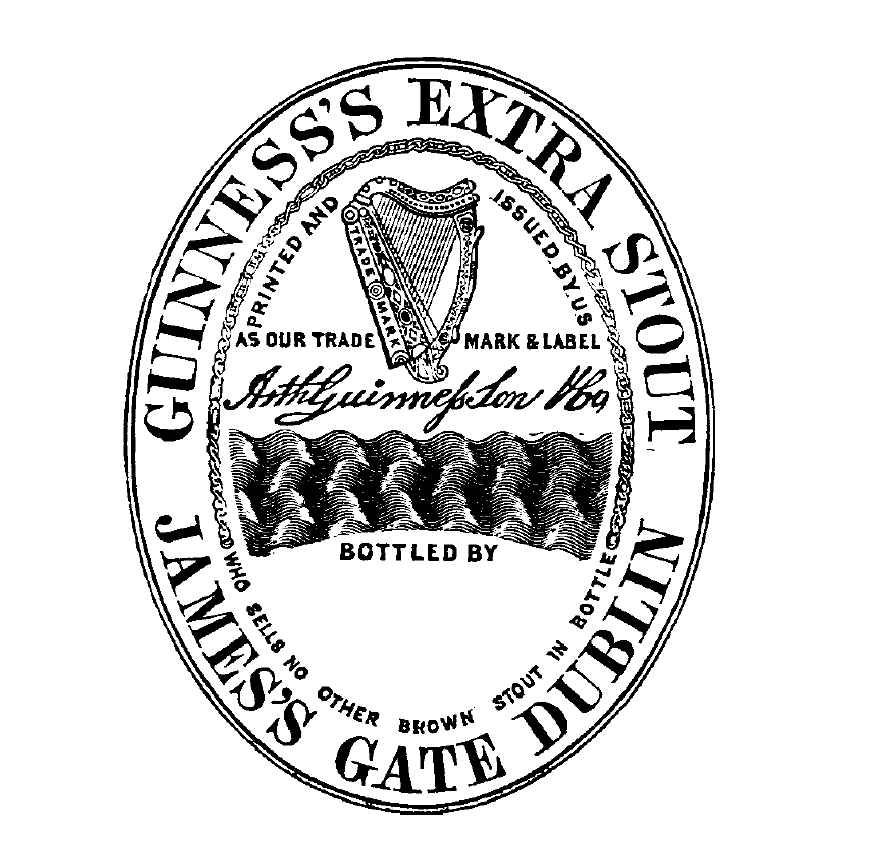Happy St. Patrick’s Day from all of us at Suiter Swantz IP!
March 17th is the day many clothe themselves in green, pinch those who aren’t, eat corned beef and cabbage and drink a questionable yet ceremonial green beer. What started as a religious feast day to honor the patron saint of Ireland, who ironically was born in Britain, has now evolved into a day to celebrate Irish heritage and culture. While this year’s St. Patrick’s Day may be observed differently than in years past, we’d still like to highlight a few notable pieces of intellectual property to celebrate.
 St. Patrick’s Day is celebrated all around the world in many different ways. Some may start their morning with a traditional Irish breakfast, while others may begin their day with a little “Luck ‘o the Irish” by eating Lucky Charms™ cereal. Lucky Charms debuted in 1964 and will celebrate its 56th birthday this St. Patrick’s Day. Lucky Charms has a history of intellectual property, which includes both patents and trademarks. The cereal’s advertising slogan, “they’re magically delicious” (Reg. No. 3518021) and the cereal’s mascot, Lucky, (Reg. No. 3498920) both are registered trademarks with the United States Patent and Trademark Office.
St. Patrick’s Day is celebrated all around the world in many different ways. Some may start their morning with a traditional Irish breakfast, while others may begin their day with a little “Luck ‘o the Irish” by eating Lucky Charms™ cereal. Lucky Charms debuted in 1964 and will celebrate its 56th birthday this St. Patrick’s Day. Lucky Charms has a history of intellectual property, which includes both patents and trademarks. The cereal’s advertising slogan, “they’re magically delicious” (Reg. No. 3518021) and the cereal’s mascot, Lucky, (Reg. No. 3498920) both are registered trademarks with the United States Patent and Trademark Office.
What many do not know is that this frosted oat cereal with marshmallow bits, or “marbits” was made by pure coincidence. Food scientists were experimenting with Cheerios® and the marshmallow candy, Circus Peanuts, and voila Lucky Charms came to be. An interesting fact to keep in mind when biting into those colorful, fun shaped marshmallows is that they come with patent protection: QUICKLY DISSOLVING AERATED CONFECTION AND METHOD OF PREPARATION (U.S. Patent No. 6,207,216), MULTI-COLORED AERATED CONFECTIONERY PRODUCTS AND PROCESS FOR MAKING (U.S. Patent No. 6,309,686), and MULTI-COLORED AERATED CONFECTIONERY PRODUCTS (U.S. Patent No. 6,436,455).
Food scientists were experimenting with Cheerios® and the marshmallow candy, Circus Peanuts, and voila Lucky Charms came to be. An interesting fact to keep in mind when biting into those colorful, fun shaped marshmallows is that they come with patent protection: QUICKLY DISSOLVING AERATED CONFECTION AND METHOD OF PREPARATION (U.S. Patent No. 6,207,216), MULTI-COLORED AERATED CONFECTIONERY PRODUCTS AND PROCESS FOR MAKING (U.S. Patent No. 6,309,686), and MULTI-COLORED AERATED CONFECTIONERY PRODUCTS (U.S. Patent No. 6,436,455).
 Another item famously associated with St. Patrick’s Day is Guinness® beer (Reg No. 0321014). Arthur Guinness started brewing beer at the St. James Gate Brewery in Ireland in 1759. In 1769, Guinness first exported their beer, sending six-and-a-half barrels to Great Britain. To this day, Guinness remains one of Ireland’s most significant exports with annual revenue of more than $2.6 billion, and on St. Patrick’s Day alone, over 13 million pints are consumed worldwide. The emblem most commonly associated with Guinness is the harp; it was on the label of the first bottle produced in 1862. The harp is still used today with the image having undergone only a few minor design changes. The harp design is inspired by the famous 14th-century Irish harp known as the “O’Neill” or “Brian Boru” harp. It was registered as Guinness’ company trademark in 1876 and is the reason the company’s first lager was named ‘Harp’ in 1960 (U.K. Reg No. 0000004474A). This famous Irish harp is also the Republic of Ireland’s official national emblem. To differentiate their harp emblem from the trademarked Guinness emblem, the Irish government turned their harp in the opposite direction of the Guinness harp for trademark purposes.
Another item famously associated with St. Patrick’s Day is Guinness® beer (Reg No. 0321014). Arthur Guinness started brewing beer at the St. James Gate Brewery in Ireland in 1759. In 1769, Guinness first exported their beer, sending six-and-a-half barrels to Great Britain. To this day, Guinness remains one of Ireland’s most significant exports with annual revenue of more than $2.6 billion, and on St. Patrick’s Day alone, over 13 million pints are consumed worldwide. The emblem most commonly associated with Guinness is the harp; it was on the label of the first bottle produced in 1862. The harp is still used today with the image having undergone only a few minor design changes. The harp design is inspired by the famous 14th-century Irish harp known as the “O’Neill” or “Brian Boru” harp. It was registered as Guinness’ company trademark in 1876 and is the reason the company’s first lager was named ‘Harp’ in 1960 (U.K. Reg No. 0000004474A). This famous Irish harp is also the Republic of Ireland’s official national emblem. To differentiate their harp emblem from the trademarked Guinness emblem, the Irish government turned their harp in the opposite direction of the Guinness harp for trademark purposes.
Those who consume Guinness know there is an art to pouring it. Bartenders in Ireland feel they have perfected the pour down to a science and have shared  their knowledge1. For those who don’t have time to master the art of pouring a Guinness do not worry, Guinness patented a widget (IMPROVED METHOD OF AND MEANS FOR DISPENSING CARBONATED LIQUIDS FROM CONTAINERS U.K. Patent No. 1266351) to help achieve the perfect pour. The widget comes in the shape of a small ball, similar to a ping pong ball or a small plastic cylinder known as a “rocket”. These help maintain the proper carbonation and consistency of the beer.
their knowledge1. For those who don’t have time to master the art of pouring a Guinness do not worry, Guinness patented a widget (IMPROVED METHOD OF AND MEANS FOR DISPENSING CARBONATED LIQUIDS FROM CONTAINERS U.K. Patent No. 1266351) to help achieve the perfect pour. The widget comes in the shape of a small ball, similar to a ping pong ball or a small plastic cylinder known as a “rocket”. These help maintain the proper carbonation and consistency of the beer.
From all of us at Suiter Swantz IP, Happy St. Patrick’s Day and may the luck of the Irish be with you and your family!
1http://www.travelchannel.com/interests/food-and-drink/articles/pour-a-proper-guinness
